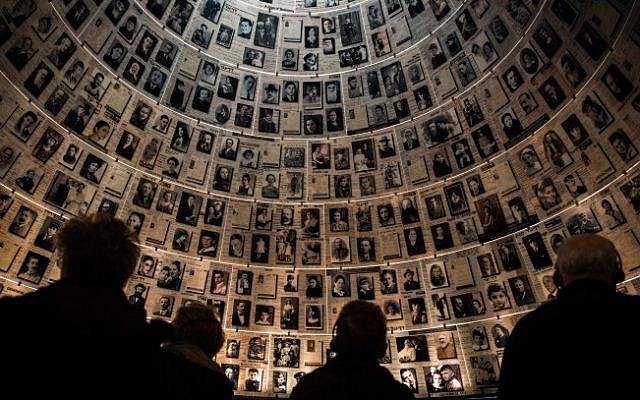
by Ellen Clark-King
I’m just back from a trip to Israel. Not the typical priestly trip to the Holy Land visiting the Christian holy sites. This was a visit arranged by the San Francisco Jewish Community Relations Council for ‘thought leaders’ (i.e. local politicians, not-for-profit execs, philanthropists, and the odd interfaith focused religious professional) to inform them about the state of the State of Israel. It intends to introduce you to a variety of the narratives that define the contemporary experience of Israelis and Palestinians, but with a clear leaning towards a moderate Jewish Israeli viewpoint.
There are three images that remain with me most clearly from the visit. One a photograph, one a viewpoint, and one a human interaction. They speak to me of the heartbreak that is the ongoing reality of Israel and Palestine and also of the small ray of hope that this may one day be resolved.
The first is a photo that hangs in one of the rooms of Yad Vashem, the haunting museum of the holocaust in Jerusalem. It isn’t one of the most stomach-churning but for me it was the most heart breaking. It shows a young father holding a little child in his arms. Facing him is the soldier who is about to shoot and kill them both. There is an ordinariness to both men – one does not look a monster, the other does not look a saint. The horror of the holocaust is ordinary people slaughtering other ordinary people because of a dehumanizing label of otherness.
Yad Vashem speaks most eloquently of the longing and necessity for a safe place for the Jewish people. A need that is current, not just historic – the immigration of French Jews has increased dramatically over the last couple of years in response to the growing antisemitism evident in France. There is a deep practical as well as psychological requirement for a home where ordinary Jews can be free from persecution by ordinary non-Jews – non-Jews made extraordinary only through the indoctrination of hate.
One thing I have heard people say about Israelis, and one thing I admit to having thought myself, is ‘how can a people who suffered so much be so ready to cause suffering to others?’ But it is criminally simplistic to expect suffering to be sanctifying. We know enough of trauma and abuse to understand that it is a pattern which is more likely to repeat than to transform.
Which brings me to me second image, that of a ‘security barrier’, in Israel’s speech, and a ‘wall’ in the understanding of Palestinians. Our group stood on a vantage point looking down at the separation of west and east Jerusalem listening to the retired Israeli Colonel who designed the wall explain its purpose. He spoke to us of the horror of terrorism – of buses blown up and children slaughtered – and the need to protect innocents from harm. He did not speak to us of the sense of captivity and futility that infects life on the other side of the wall – to some degree in the West Bank and to a far greater degree in Gaza.
The unemployment rate in Gaza sits at about 52%. The percentage of the population under 15 is around 39%. It is among the most densely populated sites on earth. Its inhabitants call it the world’s largest prison. From March 2018 to 2019 more than 190 Gaza residents have been killed and 29 000 injured by Israeli forces. Some may have been responsible for terrorist violence but we know 1 in 4 of them were women and children. The wall has further divided two populations and, while increasing Israeli security in the short term, is a cause of violence and increasing instability in the long term. Behind the wall the suffering is daily but remains hidden to its neighbours’ eyes.
My third image offers one much needed experience of hope in the midst of all this heartbreaking reality. It’s of two 13 year old girls talking with us about their school life and their families and their hopes for the future. They both speak fluent English but one of their mother tongues is Hebrew and one is Arabic. They attend Hand in Hand, one of the very few schools in Israel that teaches in both languages and intentionally recruits from both communities. They tell us about how normal it feels to them to visit in each other’s homes – but how strange it seems to many of their neighbours. They talk about the way the school always makes time for open discourse in the classroom when there are new tensions between their communities. They talk about a present and a future in which each will have a place.
Just societies can never be achieved when we listen only to the narrative of our needs and our fears. They can never be achieved when we stop meeting with and talking with those who threaten our security – who are also those whose security we threaten. They can never be achieved if our children never meet and play and argue together. My heart was repeatedly broken on this trip. By Yad Vashem, by the wall, by the weight and intractability of the divisions. But there was also hope. Hope in the desire for peace and well-being for all. Hope in two girls growing up as friends. And hope in the teacher who, when she learnt Arabic, realized those scary strangers on the bus were not discussing the overthrow of Israel but where to buy the best carrots at the local market.
The Rev. Dr. Ellen Clark-King is Executive Pastor and Canon for Social Justice, Grace Cathedral, San Francisco, CA
image: Visitors seen at the Yad Vashem Holocaust Memorial museum in Jerusalem on January 27, 2015 (Hadas Parush/Flash90)

